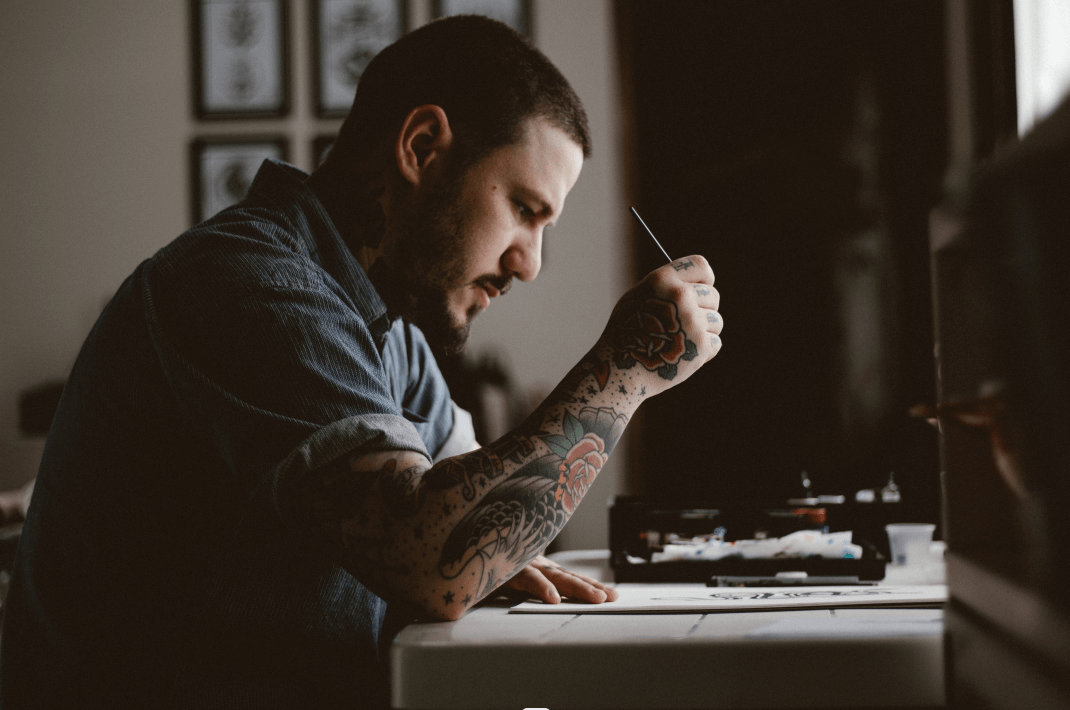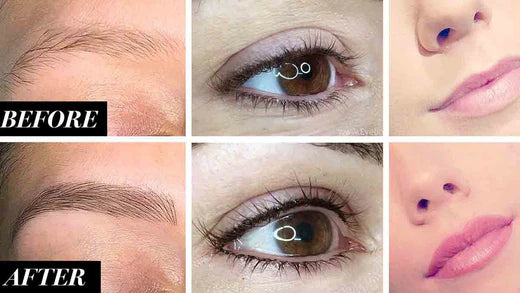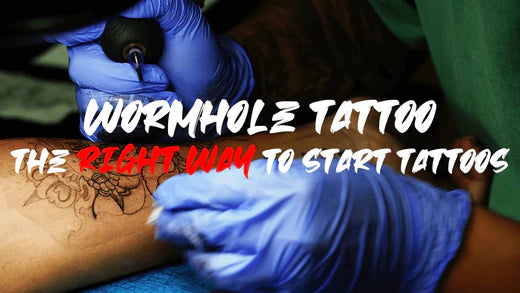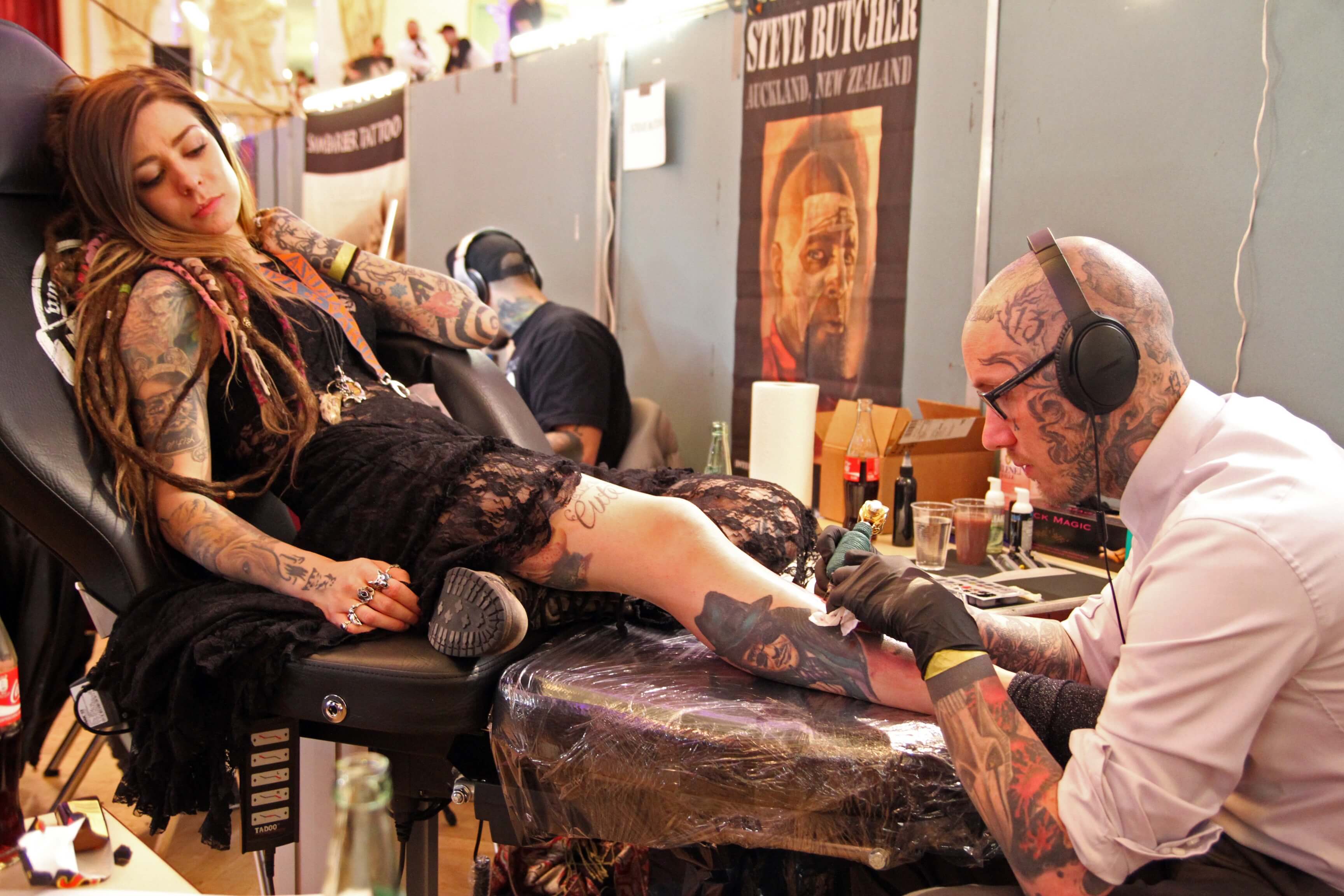If you've been on social media at any point in the past year, you've probably seen a few homemade sticks and poke tattoos. Whether it's regaining a sense of control amid COVID isolation woes, apocalyptic impulse behavior in the face of uncertainty, or simply a new daily habit, stick and poke tattoos are becoming very popular among people stuck at home. With a quick browse online, you can find DIY tattoo kits that include everything you need to start a stick and poke adventure (needles, gloves, stencils) - home tattooing has probably never been more convenient. I, like many others, recently decided to dip my toe into this trend. I had a friend who was disappointed by creating some homemade tattoos and watched a few YouTube tutorials before he started poking. Admittedly, it wasn't my best idea. Our tattoos have proven to be a grim reminder of our artistic limitations - misplaced little black dots striving to form something we can't in good conscience. So, in search of some professional advice to make my next DIY tattoo a little less miserable, I spoke to three professional tattoo artists who offered tips for beginners to help them understand some of the sticking and poking motions.
very clean lines. There's not a lot of detail." 29-year-old Malaysian tattooist Chua Yi Min drew a kitten on her inner thigh, her first DIY stick and poke. However, she advises beginners to opt for small, simple designs consisting of straight lines. "A word is always good," says Patrick, a 29-year-old London-based tattoo artist who writes on Instagram @european.son.420. The first tattoo he gave himself was a small "X". "When you first start, you want to take your time, especially if you're not very familiar with the technique," says Icon. "Since hand tattoos already take much longer than machine tattoos, start small." Where on your body should you put a stick and poke the tattoo? "It depends on your priorities," says Icon, who suggests using the forearms and thighs to reduce the pain. Finding an area where the skin has been stretched works well for the first tattoo, and Vivien says she did her first tattoo on her ankle, although it was a "very painful spot" simply because that part of the stretched skin was easier to poke through. Patrick also recommends getting a thigh. "If they get a tattoo on their arm, they only have one hand and it's hard to tattoo with one hand. So if they just want to get a tattoo, they should try it on their thigh," he said.
," says Patrick. "You need to have a really good stretch." While one hand pokes, the other hand is responsible for stretching the skin. When piercing the skin, the dip needle is usually at a 45-degree angle - although there is no hard and fast rule on this. This is because it is more difficult to be precise if the needle is pierced perpendicular to the skin. The direction in which you poke is also important. "If there's a straight line ...... I'll start at the bottom and slowly pull upwards," explains Icon. According to her, it's easier to draw the line that way. Now comes the tricky part: how deep should you go? Poke too shallowly and the ink might fall out rather than stay under the skin. But go too deep and the ink may spread - this is known as a welling-up, which can cause the tattoo to look a bit blurry. According to the three tattoo artists, knowing how deep to go is something that comes with practice. But they generally agree that it's best to start with light. "You can always go back and add ink ...... but you can't remove the ink from your skin," says Vivian, who adds that she will "poke and prod" her clients more to get them to do it again, rather than over-poke them and end up with too thick a line. It's also important to note that everyone's skin is different. This means adjusting the timing of your tattoo to your skin's reaction. Emin says she usually checks the tattoo at least twice to fill in the gaps, but no more than four times. "Too many tattoos can damage the skin. The tattooed part will swell up," she explains. If your skin becomes very red and bumpy, it's best to save the tattoo for the next session. If there are spaces between the dots, don't worry too much. Don't rush to retouch it and give your new tattoo a little time - over the next few weeks the ink may spread a little under the skin, filling in those little spaces.




